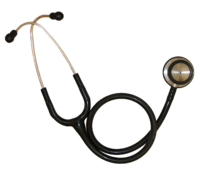
Photo from wikipedia
Abstract Impact sound performance below 100 Hz forms part of a design criterion that is particularly important for multi-story timber buildings. An ISO tapping machine, which is predominantly used for impact… Click to show full abstract
Abstract Impact sound performance below 100 Hz forms part of a design criterion that is particularly important for multi-story timber buildings. An ISO tapping machine, which is predominantly used for impact sound measurement, has properties that may result in less measurement accuracy in the low frequency range, down to 20 Hz, than in its traditional measurement range above 100 Hz. The characteristics of the pistons’ impact are dissimilar to the impact of a human foot in this lower range. This may cause low signal-to-noise ratios in field measurements and the test data may also be less representative due to the test objects’ possible structural nonlinearities affecting impact sound transmission. The ISO rubber ball has shown to bear a close resemblance to a human’s excitation in the low frequency range, which makes it a suitable excitation device from this perspective. To support correlations between simulations and measurements, measuring impact forces in order to extract frequency response functions would be beneficial. To enable measurements of impact forces that stem from the ISO rubber ball, equipment for field measurements of forces and potentially point mobilities has been manufactured and evaluated. Furthermore, an investigation has been conducted into the repeatability of the rubber ball’s low frequency force spectrum for floors with different mobilities. Impact force measurements have been made on lightweight timber floors as well as on concrete floors. Within the frequency range up to around 55 Hz, it appears to be possible to use a prescribed force spectrum for the ISO ball, together with impact sound measurements, to create accurate impact force to sound frequency response functions for different floors. Also, instrumenting the impact point with an accelerometer enables estimates to be made of direct point mobilities.
Journal Title: Applied Acoustics
Year Published: 2020
Link to full text (if available)
Share on Social Media: Sign Up to like & get
recommendations!